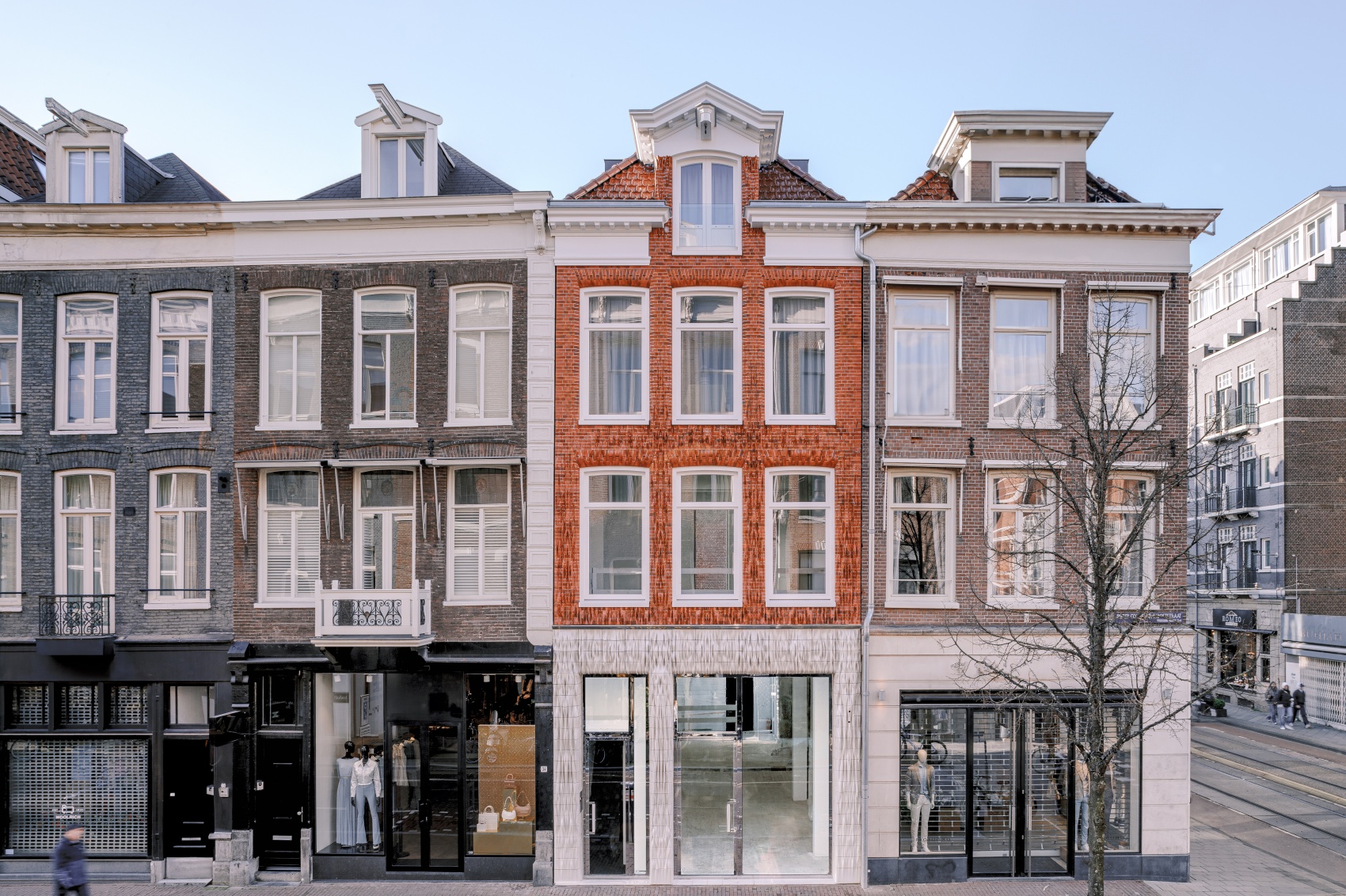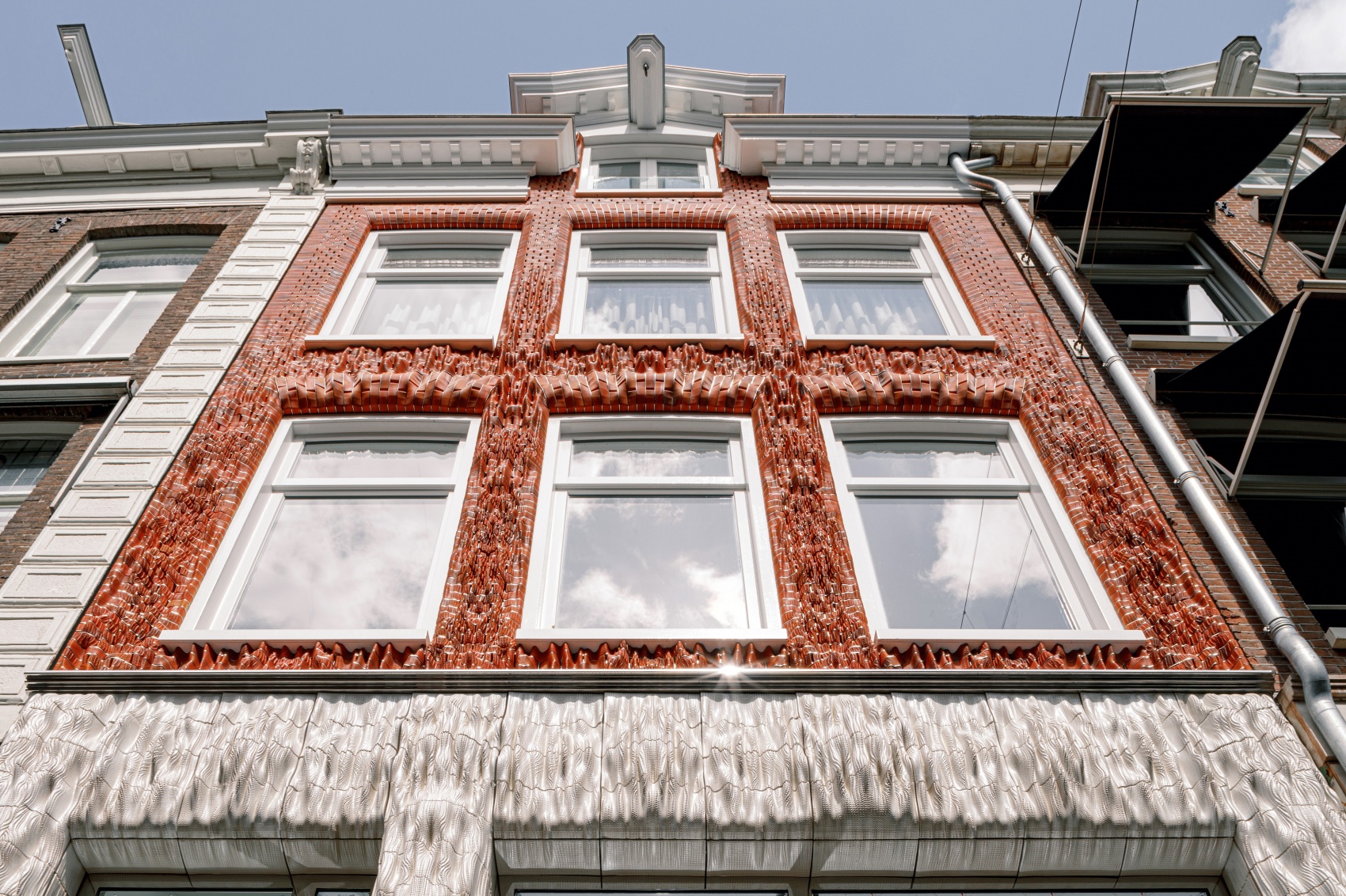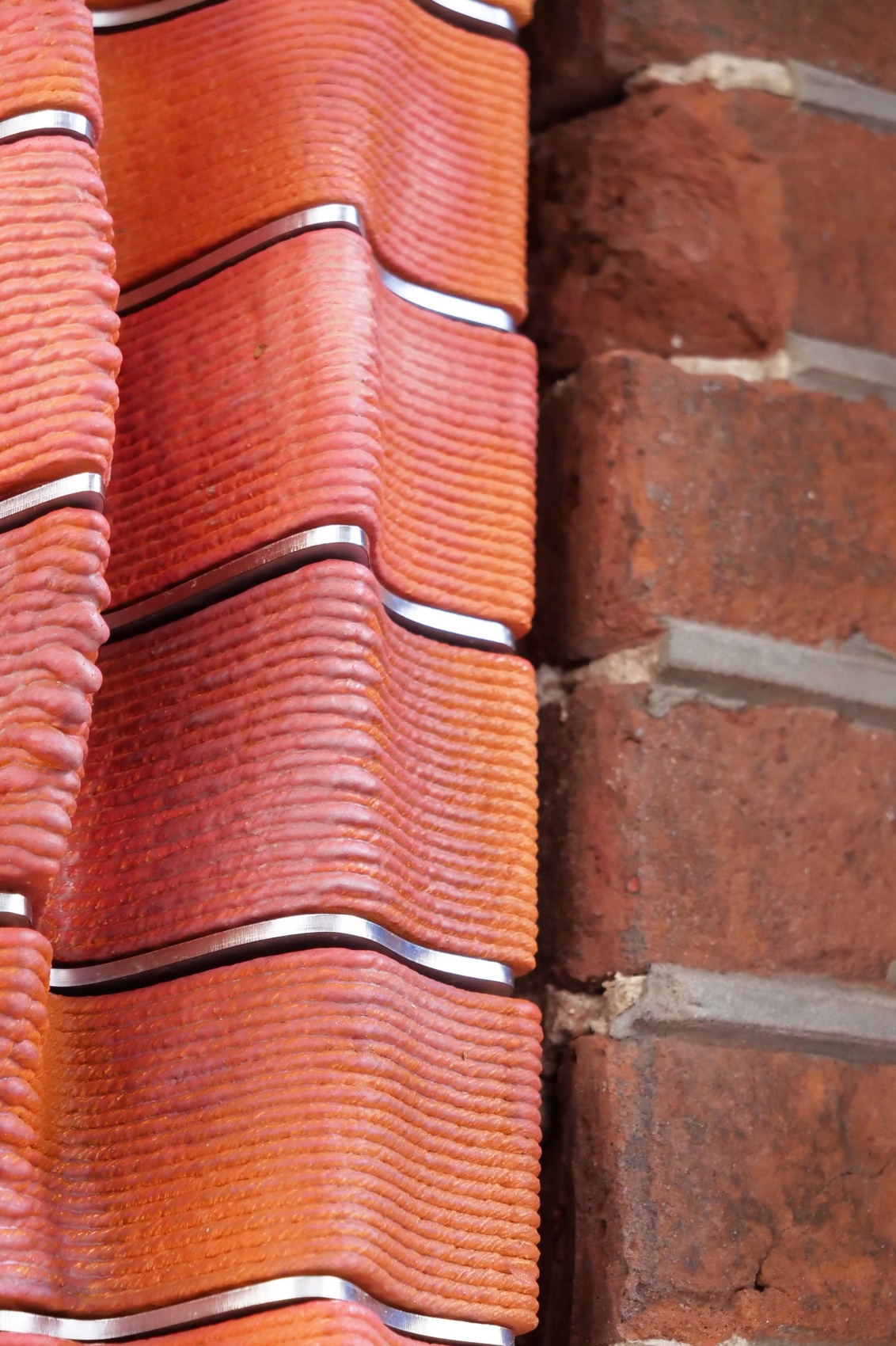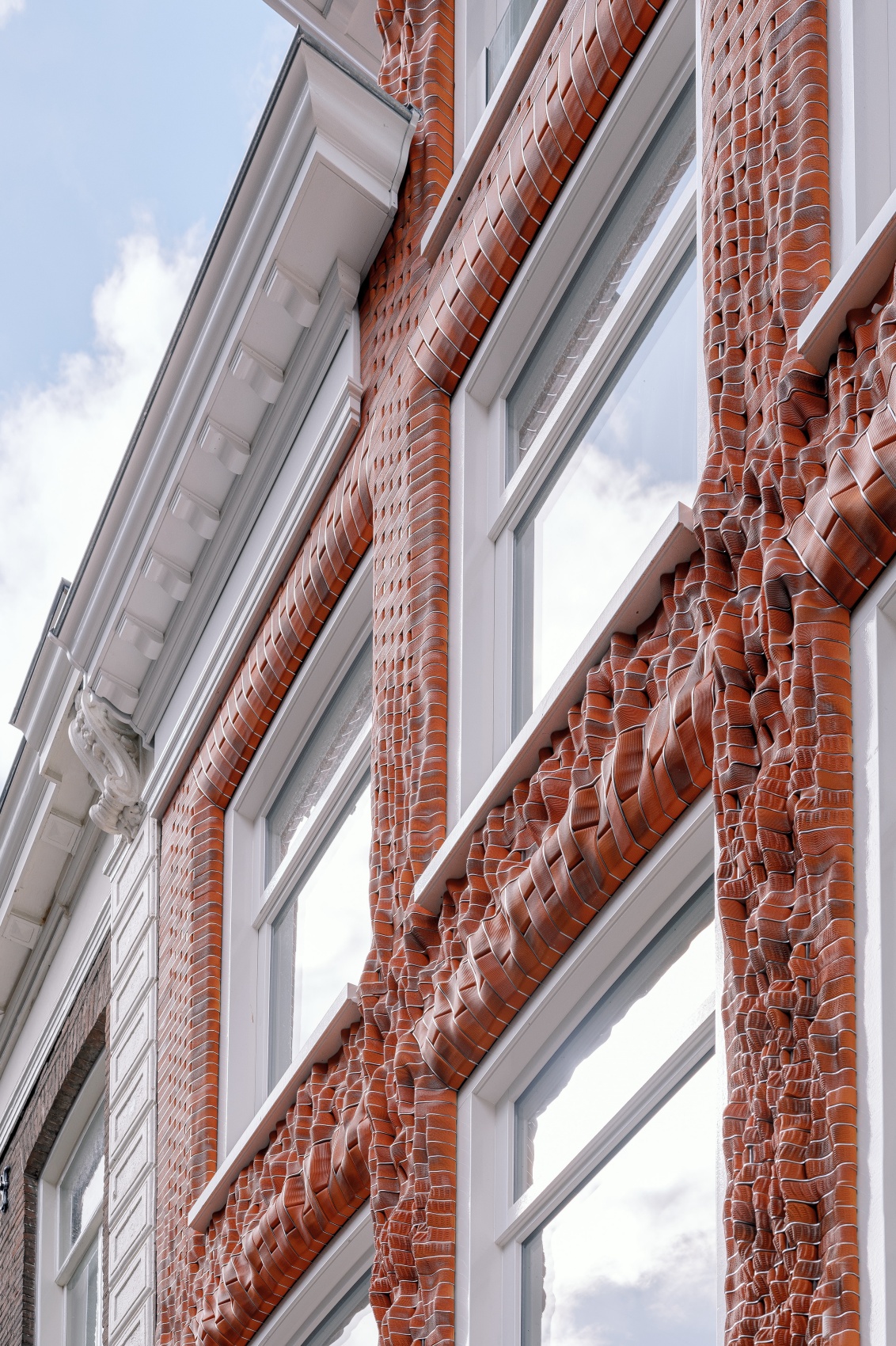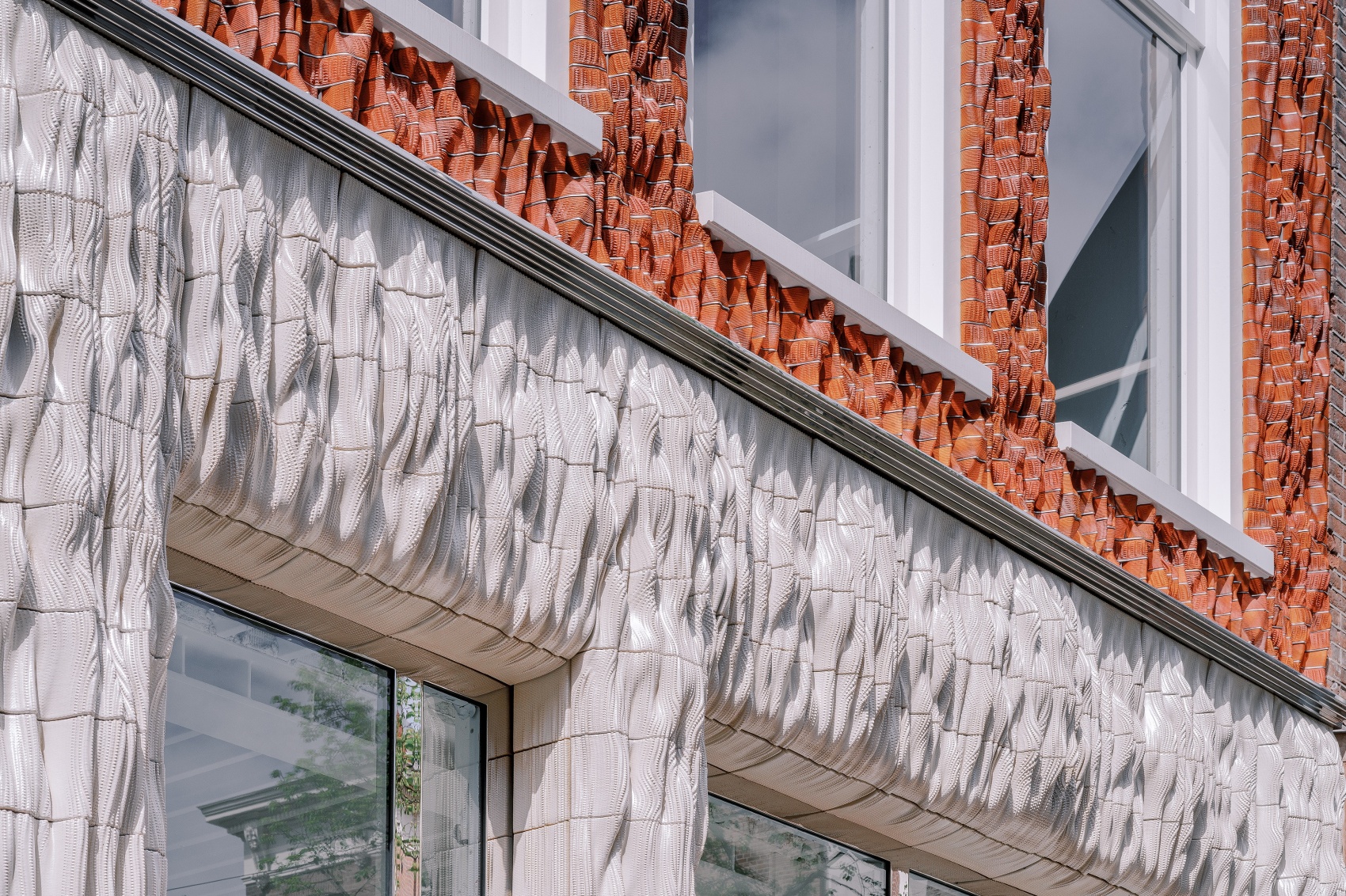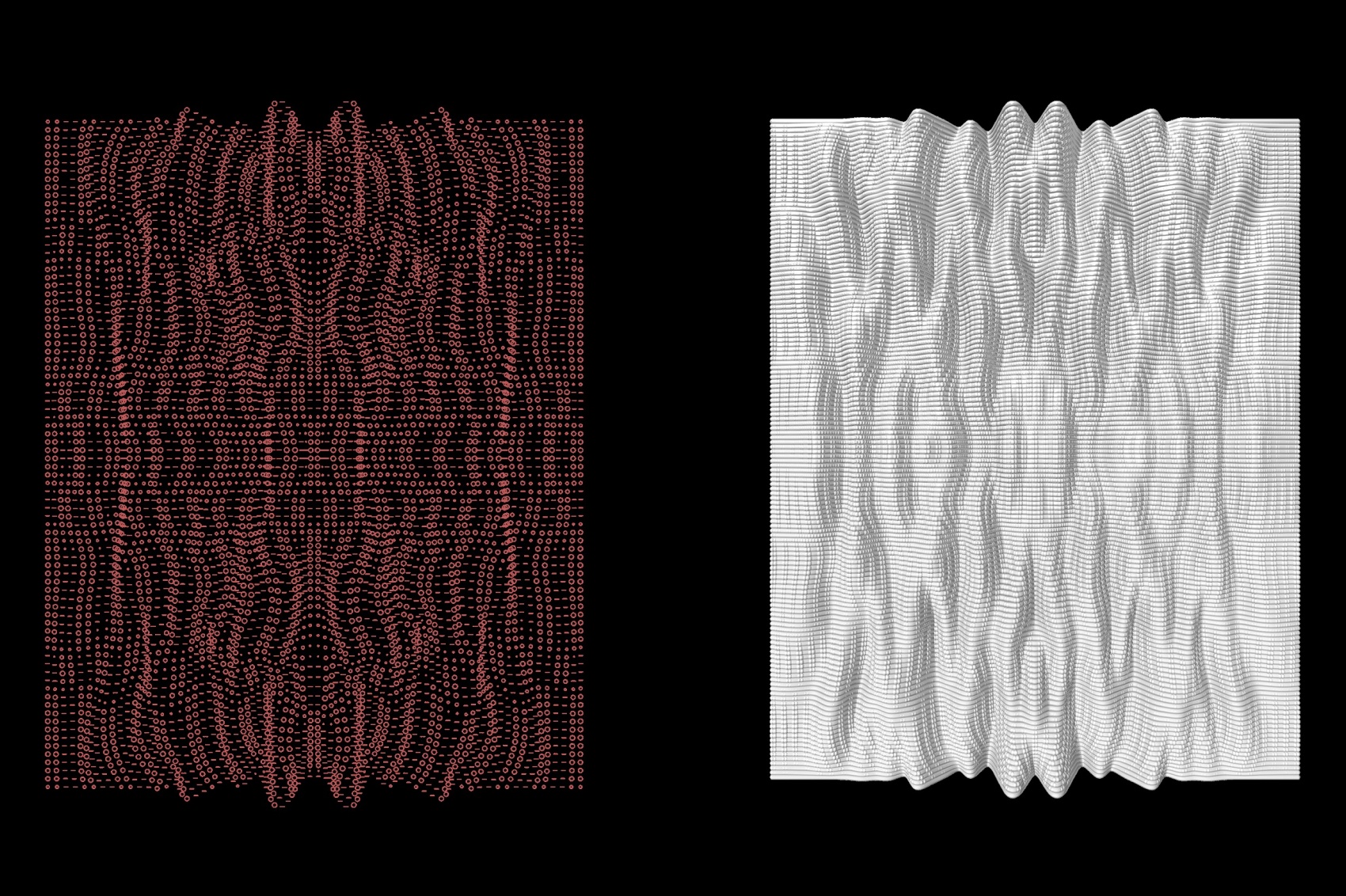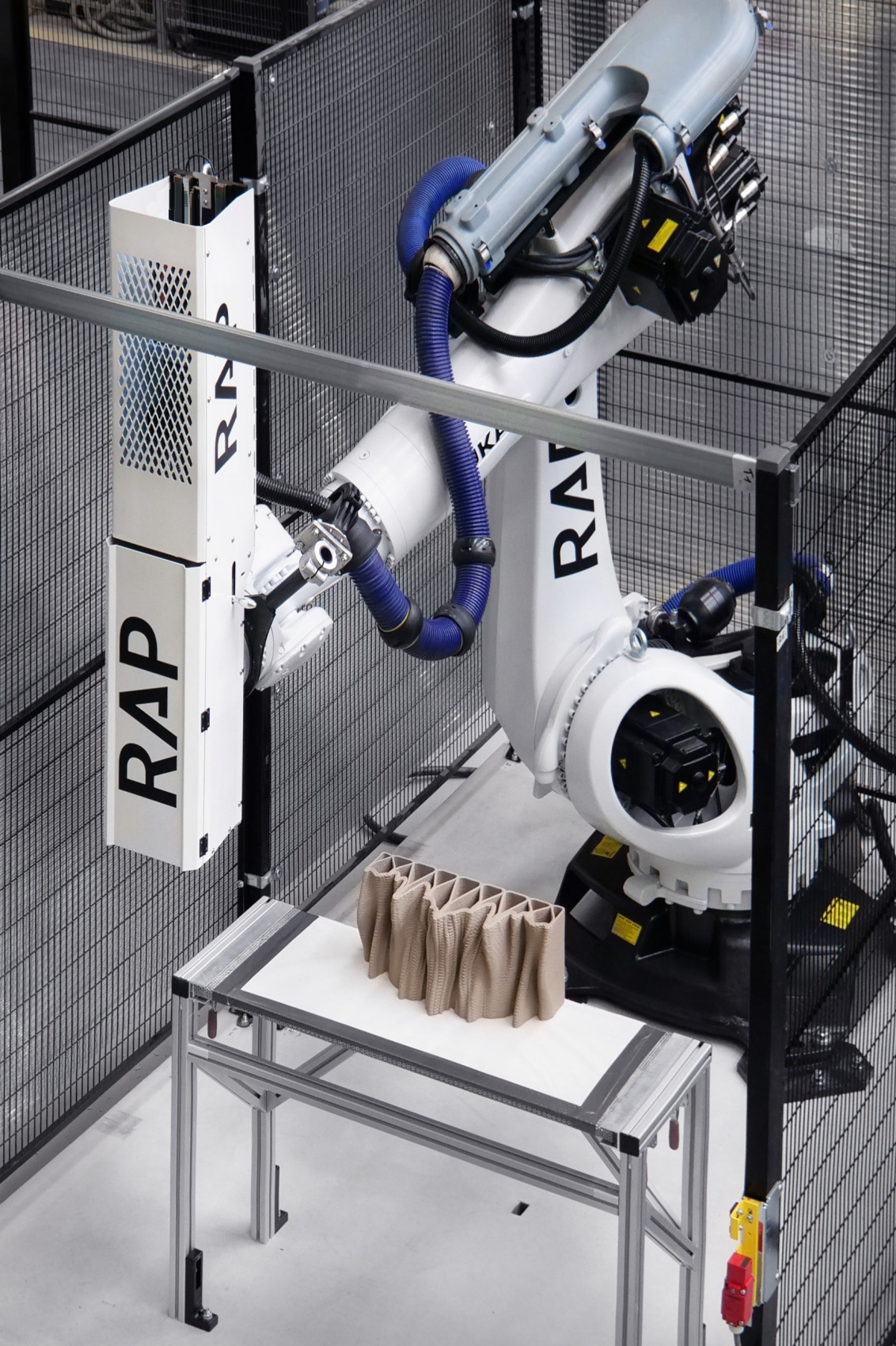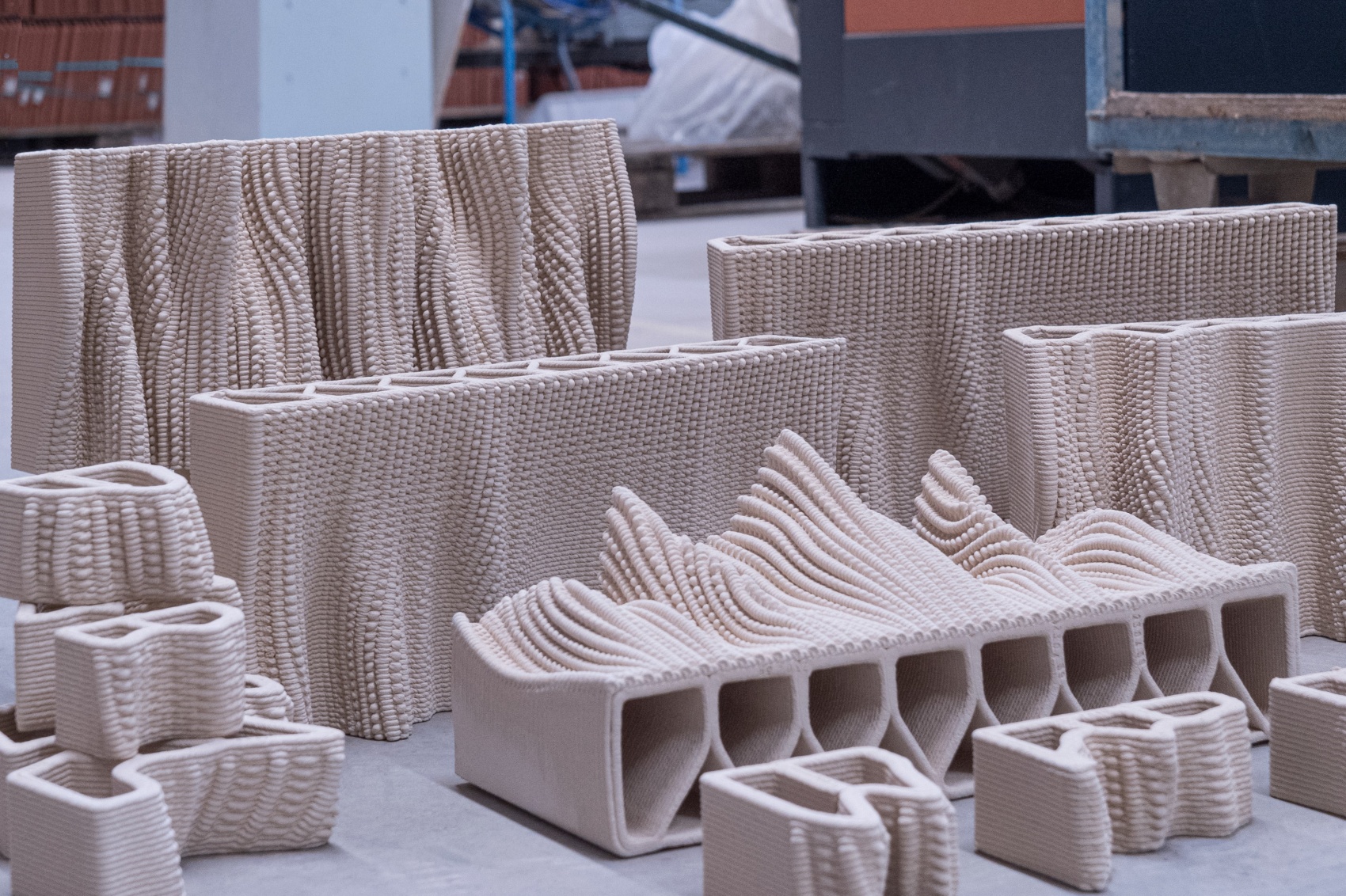“Ceramic house” on the exclusive shopping street P.C. Hooftstraat in Amsterdam is a project by Dutch studio RAP. The facade of the townhouse combines the city’s traditional colour scheme with the use of modern technology. The 3D printed bricks look like knitted fabric.
Viewed from afar, the building does not stand out from the rest of the street furniture. This is a deliberate effect, as the RAP studio focused on aesthetics and the attractive integration of the new building into its historic neighbours. It is only at close range that the undulating and irregular structure of the façade becomes apparent. The appearance of the building changes depending on the viewing perspective.
The façade consists of 3D printed convex and wavy bricks measuring 40 × 20 cm. The ceramic bricks attached to the front part are glazed and painted. The ground-floor section is kept in pearl white, while the colour of the floors is intended to refer to the traditional orange brick. Interestingly, the corrugation of the bricks varies from floor to floor. From below, the undulating effect is more pronounced than on the top floor.
The architects at RAP were inspired by the knitted collections housed in the Amsterdam State Museum (Rijksmuseum). Elements of the printed façade resemble stitches, threads and stitches. An additional inspiration for the design was the city itself. The characteristic brick buildings with tiled elements are classic features of the architecture of Amsterdam and the port cities of the former Hanseatic League.
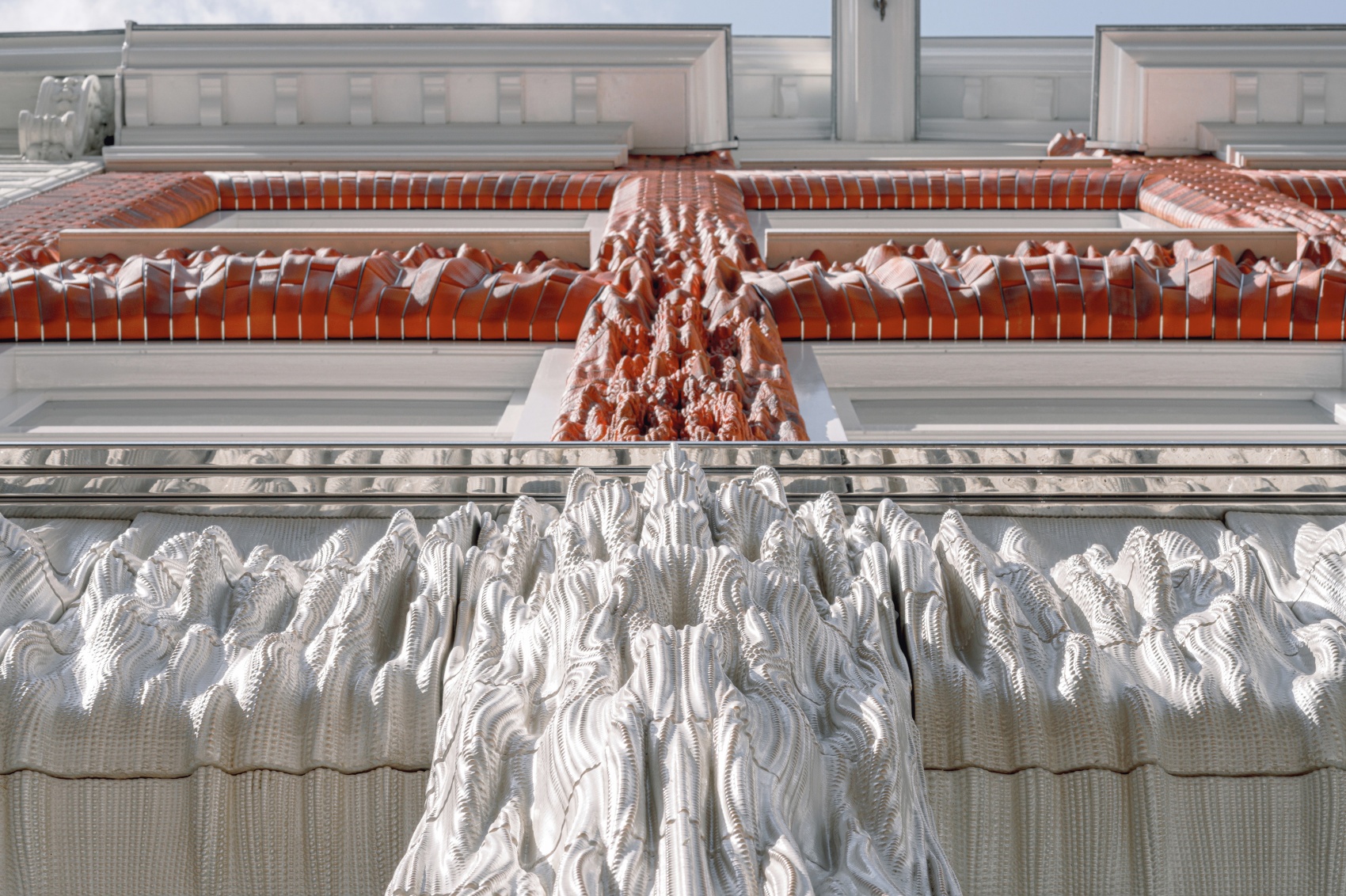
Studio RAP consists not only of architects, but also creative programmers. It is the algorithm developed by RAP that is responsible for the design of the bricks. The studio has been fine-tuning its designs for years using IT and robotic technologies. The 3D printers at RAP’s headquarters are in effect large and advanced industrial robots that print bricks en masse.
This is not RAP’s first project using robotic work. The Rotterdam-based Dutch studio has also decorated the building’s entrance gate with printed tiles in the past. However, the most interesting project was certainly the printing of an entire house in Rotterdam. The trends set by RAP are starting to gain popularity. Therefore, it is the innovative technologies that the studio is promoting that are set to be the future of architecture and design.
Photos: Riccardo De Vecchi
Source: Studio RAP
Also read: Architecture | Curiosities | Technology | Ceramics | Amsterdam | Netherlands | Tenement | whiteMAD on Instagram


